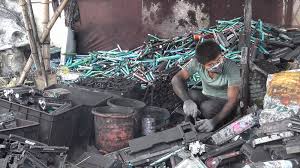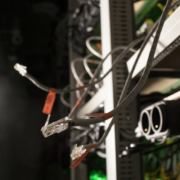Ink Waste: The Environmental Impact of Printer Cartridges
Mar 30, 2017 1:00 pm GMT
11 ink cartridges per second and 1 million cartridges per day are thrown away. That’s a waste we should stop.
Compared to big climate topics, such as the Clean Power Plan, ink cartridges are a minor issue to be sure. Still, even minor issues deserve attention.
How severe is the impact of printers and their corresponding ink cartridges, from the manufacturing process to the eventual discarding and recycling of materials? Can we reliably say that there’s a measurable effect?
The Chemicals & Manufacturing Process
Ink printers and their ink are made up of several ingredients, most of them chemicals that have the potential to be damaging to you and the environment. Some of these include butyl urea, which prevents your paper from curling; cyclohexanone, which helps ink adhere to polymers; several dyes including reactive red 23 dye, acid yellow 23 dye and direct blue 199 dye, which contains sulphur; ethoxylated acetylenic diols which modify the surface tension of the water and colours; Ethylenediaminetetraacetic acid (EDTA) which is full of contaminants and ethylene glycol.
The harmful environmental factors of ink cartridges can be felt since they are manufactured. When you produce a new laser cartridge, you consume more than three quarts of oil. For inkjet cartridges, you require about three ounces of oil.
There are many adverse effects of just throwing away an old ink or toner cartridge as the volatile organic compounds (VOCs), and heavy metals present will pollute the soil and water when they reach landfills.
Unfortunately, more than 375 million empty ink and toner cartridges are thrown out every year, and end most of them end up in landfills. To get some perspective on that fact, this means that 11 cartridges per second and 1 million cartridges per day are thrown away. For a print cartridge to fully decompose in a landfill site, it takes 1000 years, which gives you an extent of how damaging these cartridges can be to the environment.
Another damaging effect of not properly disposing of ink cartridges is that the toner (carbon black) has been classified as a potential carcinogenic by the International Agency for Research on Cancer.
If you recycle your printer cartridges, you conserve energy and natural resources, as you reduce the energy needed for the materials. By recycling, around 11 millions gallons of oil can be saved in just seven months. Since 97% of the materials used in printer cartridges can be recycled, this means the waste is reduced to only 3%.
The True Environmental Impact of Printer Cartridges
Manufacturing just one single toner cartridge emits around 4.8kg CO2 Greenhouse Gases per cartridge. Bear in mind that this is just for the cartridge, and this figure does not take into account the toner inside. The Life Cycle Assessment of toner evidences that the GHG emissions are in the region of 16 metric tons per 1 metric ton of toner produced. Generally a cartridge that yields five thousand pages contains 200 grams of toner, which means that the CO2 emission per cartridge is 3.2 kg.
To put this into perspective, consider that the average household of four emits 1,200 kg of CO2 emissions per month. If you take into account that a single factory can manufacture 200,000 cartridges per month, we’re talking about 640,000 kg of monthly CO2 emissions per factory output. That’s the equivalent monthly CO2 output of over 500 average homes.
This large abundance of waste can be reduced, or practically eliminated by reusing and recycling. However, around 50% of all toner cartridges and 70% of all ink cartridges are still not recycled or disposed of properly.
It’s vital that this waste starts to be recycled, as the plastics that are used in printer cartridges are composed of an engineering grade polymer. This polymer has a notably slow decomposition rate that ranges between 450 to 1000 years to be fully decomposed, depending on the cartridge type. The printer ink may also be leaked, which contributes to pollution in the surrounding environment.
Apart from disposing of the printer ink cartridges correctly, it’s also important to raise education on how to reduce the waste of these cartridges. For example, if you do need to print, minimize the print space and use the double-sided feature. A lot of the things we need to print are cluttered with fine print, advertisements, and other useless information, so check that you are only printing the necessary pages. And finally, ask yourself: do you really need to print that email?
People understand that recycling paper is important, but there is still a ways to go before the same mind-set about recycling printer cartridges seeps into people’s consciousness. With the advancement and popularity of mobiles and e-readers, the need for printing has been greatly reduced, but there is still a vast need for it in home and office environments. Printing still plays a major role in our daily lives, so awareness must be raised to minimize the environmental damage in the future.
Photo Credit: frankieleon via Flickr
Thank Bob for the Post!
Energy Central contributors share their experience and insights for the benefit of other Members (like you). Please show them your appreciation by leaving a comment, ‘liking’ this post, or following this Member.











